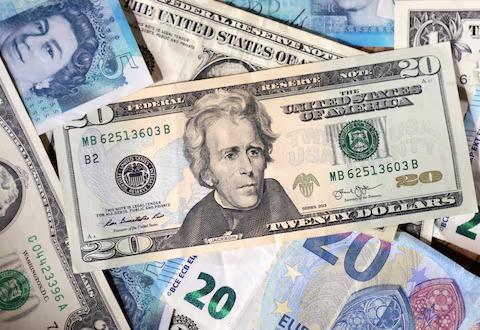The U.S. dollar traded largely flat on Tuesday as global investors remained cautious ahead of a critical U.S. tax vote in Congress, while the Australian dollar maintained recent gains ahead of a closely watched policy decision from the Reserve Bank of Australia (RBA).
Market sentiment has been subdued with traders positioning for potentially market-moving events in both the U.S. and Australia. In Washington, lawmakers are expected to vote later today on President Donald Trump’s sweeping tax reform package, a key element of his economic agenda. The outcome could influence fiscal policy and investor appetite for U.S. assets in the short term.
The dollar index, which tracks the greenback against a basket of six major currencies, hovered around 104.25, showing little movement from the previous session. Analysts say the market is waiting for clarity on whether the Republican-led House can push the tax bill through amid some internal divisions.
“The dollar is treading water,” said Joe Capurso, head of international economics at Commonwealth Bank of Australia. “Traders want to see if the tax package passes cleanly or faces resistance, which could delay implementation or water down key provisions.”
Meanwhile, the Australian dollar held steady near 0.6780 against the U.S. dollar, supported by strong domestic data and expectations that the RBA may adopt a more hawkish tone in its upcoming policy statement. Inflation remains stubbornly high in Australia, and markets are pricing in a potential rate hike or, at minimum, firmer forward guidance.
“Any sign that the RBA is prepared to raise rates again would boost the Aussie,” Capurso added. “It’s one of the few major central banks still in tightening mode.”
The Japanese yen weakened slightly to 156.85 per dollar, with investors continuing to monitor any signs of intervention from Japanese authorities after a series of warnings about excessive currency moves. Despite recent volatility, the Bank of Japan has not made any clear moves to defend the yen, though officials maintain they are “watching closely.”
Elsewhere, the euro remained soft around $1.0850 amid weak German industrial data and concerns about sluggish growth in the Eurozone. The British pound was little changed at $1.2715, as traders looked ahead to U.K. inflation figures due later in the week.
In emerging markets, the Chinese yuan stabilized near 7.24 per dollar after the People’s Bank of China set a slightly stronger-than-expected midpoint fixing. Analysts believe Beijing is trying to manage depreciation expectations amid soft economic readings and ongoing property sector woes.
Investors globally are juggling multiple crosscurrents, including U.S. fiscal policy uncertainty, central bank decisions, and geopolitical risks—particularly the war in Ukraine and rising tensions in the South China Sea. Currency markets have reacted with relative calm, but analysts warn that volatility could return quickly if key votes or decisions do not meet expectations.
“The FX market is in a holding pattern,” said Jane Foley, head of FX strategy at Rabobank. “But it won’t last. The next 48 hours could set the tone for weeks to come, especially if U.S. fiscal policy veers off expected paths or central banks surprise.”
With the U.S. tax vote and RBA decision both imminent, traders are bracing for potential market shifts. For now, though, currencies are holding their ground—awaiting direction from policymakers.
Source: Reuters



